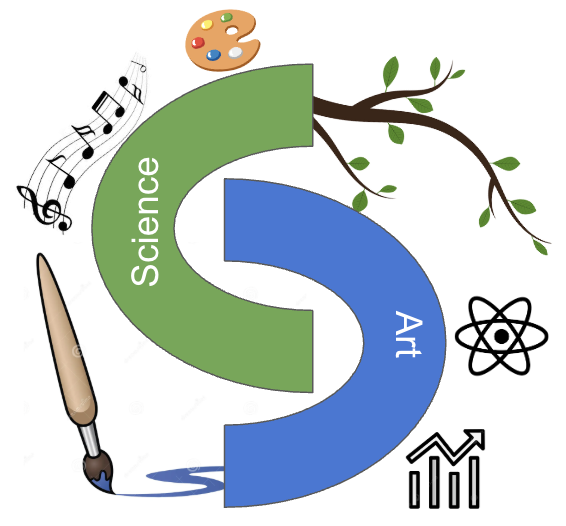
Unit 6: Stoichiometry
How can we calculate the exact amounts of reactants and products needed in a chemical reaction?
About
Unit 6 Contents
A. Unit Resources
B. Unit Information
C. Standards & Practices
D. Task Sets
1 - Unit Opener
2 - Counting with Moles
3 - Best Ratio
4 - Amount of Reactant or Product
5 - Engineering Lab
Unit Outcome
Uses mathematics and computational thinking to show that atoms and mass are conserved during chemical reactions.
Anchoring Phenomenon
Stoichiometry is used for chemical reactions and processes across many different industries (vehicle manufacturing and use, agriculture, rocketry, healthcare, culinary, etc.) in order to maximize products and minimize the waste of excess reactants.
Essential Question
How can we calculate the exact amounts of reactants and products needed in a chemical reaction?
Unit 6 Planner
Links to All Instructional Materials
The Unit 6 Planner Google Doc can be accessed using the link above or you can scroll down to see the entire Unit Plan by scrolling down.
How is the Unit Structured?
Unit 6 contains 5 task sets which will take approximately 6 90-minute class periods to complete. Essential Questions and Phenomenon for the five learning tasks of this unit are found in the Unit 6 Overview.
Unit 6 Webinar
Unit 6 Webinar Slide Deck
An Arts Integration lesson can be found in this unit.
Unit Resources
Open Access Unit 6
This Google folder (English) - houses all documents for this unit that have been updated.
Google folder (Spanish) - houses all documents for this unit that have been updated.
This Google spreadsheet for Stoichiometry (Spanish) houses some of the documents for this unit that have been translated into Spanish. We do have plans to update these translations as part of the WRAP grant.
Student Interactive Notebook
Document format - Google Link (Docs)
Vocabulary List
These are the vocabulary terms used and discussed in the unit.
Rubric
This is the rubric for Unit 6 and lives in the restricted folder.
Tests, Quizzes and Keys (English)
Tests, Quizzes and Keys (Spanish)
These are restricted documents. Restricted-access materials are for teachers only. You must request access. To request access to the restricted folder, please fill out this linked Google form
Unit Information
-
The following are example options to extend parts of the unit to deepen students’ understanding of science ideas:
Task Set 2
Task Set 3
Task Set 4
-
Task Set 1
Student talk/sticky notes
Task Set 2
Mole conversion worksheet
Task Set 3
Lab template/conclusion
Task Set 4
Practice Problems
Task Set 5
Engineering Portfolio
-
HS-PS1-7: Use mathematical representations to support the claim that atoms, and therefore mass, are conserved during a chemical reaction. [Clarification Statement: Emphasis is on using mathematical ideas to communicate the proportional relationships between masses of atoms in the reactants and the products, and the translation of these relationships to the macroscopic scale using the mole as the conversion from the atomic to the macroscopic scale. Emphasis is on assessing students’ use of mathematical thinking and not on memorization and rote application of problem-solving techniques.] [Assessment Boundary: Assessment does not include complex chemical reactions.]
Unit 6 Stoichiometry Test
Standards & Practices
-
This unit builds toward the following NGSS performance Expectations (PE’s). Links to evidence statements are provided:
HS-PS1-7: Use mathematical representations to support the claim that atoms, and therefore mass, are conserved during a chemical reaction. [Clarification Statement: Emphasis is on using mathematical ideas to communicate the proportional relationships between masses of atoms in the reactants and the products, and the translation of these relationships to the macroscopic scale using the mole as the conversion from the atomic to the macroscopic scale. Emphasis is on assessing students’ use of mathematical thinking and not on memorization and rote application of problem-solving techniques.] [Assessment Boundary: Assessment does not include complex chemical reactions.]
-
This unit contains these Life Science Grade 9-12 DCI elements.
PS1.B: Chemical Reactions
The fact that atoms are conserved, together with knowledge of the chemical properties of the elements involved, can be used to describe and predict chemical reactions.
-
This unit focuses on these Science and Engineering Practices
Using Mathematical and Computational Thinking Mathematical and computational thinking at the 9–12 level builds on K–8 and progresses to using algebraic thinking and analysis, a range of linear and nonlinear functions including trigonometric functions, exponentials and logarithms, and computational tools for statistical analysis to analyze, represent, and model data. Simple computational simulations are created and used based on mathematical models of basic assumptions.
Use mathematical representations of phenomena to support claims.
-
This unit contains these Crosscutting Concepts
Energy and Matter
The total amount of energy and matter in closed systems is conserved.
-
This unit contains this connection to the Nature of Science
Science Knowledge Assumes an Order and Consistency in Natural Systems
Science assumes the universe is a vast single system in which basic laws are consistent.

